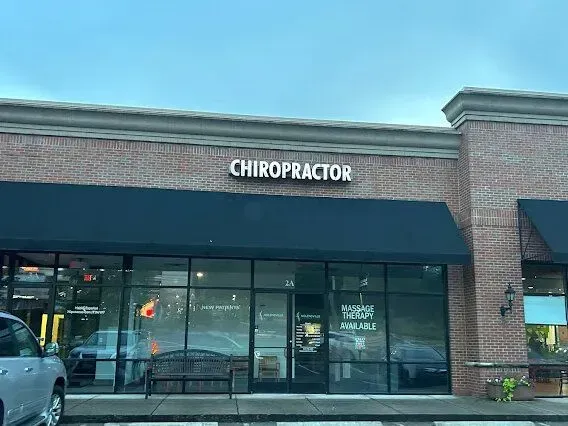The Top Benefits of Seeing a Chiropractor Regularly in Nolensville, TN
Most people think about visiting a chiropractor only when something feels off. Maybe it’s a sore back after a long weekend or a stiff neck after too many hours at the computer. While chiropractic care is great for relief during those moments, the real magic happens when you make it a regular part of your health routine.
At Nolensville Chiropractic, we see the difference consistent care makes every day. People walk in dealing with daily aches and tension, and over time, they walk out feeling stronger, more flexible, and more in tune with their body. Chiropractic is not just for when you’re hurting. It’s for helping your body function at its best, day after day.
Let’s talk through some of the biggest benefits of getting adjusted on a regular basis.
You may notice better posture without even trying. Life tends to pull us forward. We lean into screens, hunch over phones, and spend long hours at desks. These habits wear on your spine and shoulders. When your body is properly aligned, it’s easier to hold yourself upright without effort. Regular adjustments help reinforce that alignment and support a more natural, balanced posture.
You might sleep more soundly. If your body is constantly dealing with tension or discomfort, it’s hard to fully relax at night. Many people who begin chiropractic care report falling asleep faster and waking up less during the night. This has a lot to do with how chiropractic can reduce stress on the nervous system. When your spine is moving well, your body has a better chance of staying calm and regulated.
You could notice fewer headaches. Not all headaches are caused by spinal issues, but many are linked to tension in the neck and upper back. Regular chiropractic care helps reduce tightness in those areas and may lessen the frequency and severity of headaches. If you deal with tension headaches or spend a lot of time looking down at devices, chiropractic may be part of the solution.
You stay ahead of injury instead of reacting to it. Waiting until you’re in pain to take action puts your body at a disadvantage. Routine adjustments help keep your joints and muscles moving well, which can reduce the chances of pulling something or developing chronic tension. Chiropractic care is a proactive step that supports your mobility before issues set in.
You may recover faster from daily wear and tear. Whether you’re a parent lifting kids, an athlete training hard, or someone who works on your feet all day, your body takes a beating. Regular chiropractic adjustments can help you bounce back quicker. They improve blood flow, reduce inflammation, and support the healing process in a natural way.
You might notice a boost in your overall energy. When your spine is aligned and your body isn’t fighting stiffness or tension, it takes less effort to get through your day. You’re not constantly adjusting your posture or stretching out sore muscles. That added efficiency often shows up as improved focus, fewer midday slumps, and a general feeling of being more alert.
You build awareness of how your body feels and moves. The more you get adjusted, the more in tune you become with your own health. You start to notice when something feels off before it becomes a bigger issue. That awareness is key to preventing problems and keeping yourself in top shape.
You support your immune system and digestion. Your spine protects your nervous system, and your nervous system controls almost everything in your body. When your spine moves well, signals flow more freely. Many patients report fewer colds, better digestion, and an overall sense of well-being after regular visits. While chiropractic isn’t a cure-all, it can create an environment where your body works more efficiently.
You get time set aside just for your health. Life moves fast, and it’s easy to push your own care to the back of the list. Making regular chiropractic appointments gives you a reason to slow down and check in with your body. That consistency often leads to better long-term health choices in other areas too, like movement, hydration, and sleep.
You build a relationship with a care provider who knows your body. At Nolensville Chiropractic, we don’t just see you once and send you on your way. We get to know your habits, your work demands, and your goals. That connection allows us to give better care over time and make adjustments based on how your life evolves.
You support long-term joint health. Joints that move regularly are less likely to develop stiffness and degeneration. Think of it like keeping the hinges on a door well-oiled. Regular chiropractic care keeps your spine and joints functioning well, which can reduce discomfort now and possibly prevent bigger problems later.
You help your body manage stress more effectively. Stress doesn’t just live in your mind. It shows up physically through tight shoulders, clenched jaws, and stiff necks. When your spine is in proper alignment, it helps the nervous system manage stress better. Patients often say they feel more relaxed and mentally clear after an adjustment, even when they didn’t realize how much stress they were carrying.
The best part about regular chiropractic care is that it can be tailored to fit your lifestyle. You don’t have to come in every week if that doesn’t work for you. Maybe it’s once a month or during certain seasons when your body needs more support. We work with you to build a routine that feels doable and delivers real benefits.
And if you ever have a flare-up or new concern, you’re not starting from scratch. We already know your body, your history, and what has worked for you in the past. That makes it easier to jump in and help when something unexpected happens.
Making chiropractic care a regular part of your wellness routine is one of the simplest ways to invest in how you feel every day. It’s not just about fixing problems. It’s about giving your body what it needs to stay mobile, pain-free, and resilient.
If you’ve only experienced chiropractic once or twice in the past, we’d love to show you what consistent care can do for you. At Nolensville Chiropractic, we’re here to support your long-term health and help you feel your best without relying on medications or invasive treatments.
Whether you’re new to chiropractic or ready to get back into a routine, now is a great time to prioritize your health. Regular care in a trusted, local setting can make all the difference. Let us help you get there.













